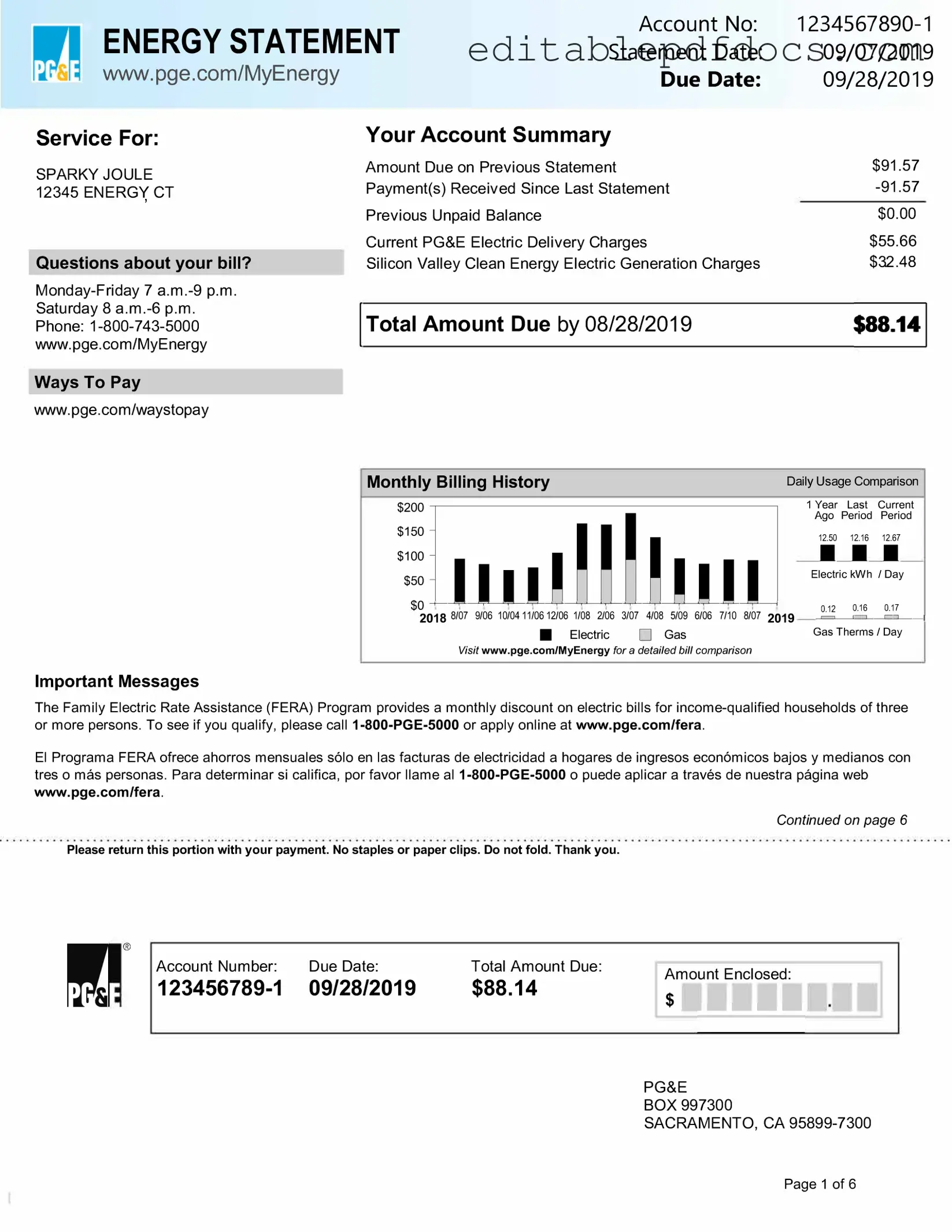Fill a Valid Utility Bill Template
The Utility Bill form is a document used to verify a resident's address and utility usage for various purposes, such as applying for services or benefits. This form typically includes essential information like the account holder's name, address, and utility provider details. To ensure a smooth application process, fill out the form accurately by clicking the button below.
Open Editor Now
